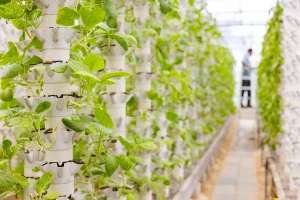In this article, you will find comprehensive information about the crops that can be grown in vertical farming. We will discuss which plants are suitable for this system, what to pay attention to, and what mistakes to avoid. In addition, care tips, advantages, and yield-enhancing strategies will be presented for each product group. At the end of the article, you will find a general assessment of the future of this method and its importance in terms of sustainable agriculture.
Vertical farming is one of the most innovative examples of modern agricultural technology. This system enables maximum yield in limited areas. Thanks to layered structures, plants are grown on top of each other. This reduces the need for soil and allows production to continue throughout the year. Factors such as increasing population in city centers, the decrease in areas suitable for agriculture, and climate change make vertical farming increasingly important.
If you’re ready, let’s discover together which products can be grown most efficiently in vertical farming.
Contents
- Green Leafy Vegetables
- Herbs and Aromatic Plants
- Fruits
- Microgreens
- Root Vegetables
- Mushroom Types
- Tomatoes, Peppers, and Cucumbers
- Flowers and Ornamental Plants
- The Future of Grains and Legumes
- The Future of Vertical Farming and Sustainability
- Frequently Asked Questions (FAQ)
- Mini Summary
Green Leafy Vegetables
One of the most productive product groups in vertical farming is green leafy vegetables. This group includes types such as lettuce, spinach, arugula, chard, and lamb’s lettuce. These plants grow quickly, do not take up much space, and use water efficiently. Thanks to these characteristics, they can be easily grown indoors with LED lighting.
In vertical farming systems, leafy greens are typically grown using hydroponics. In this method, plants are fed with nutrients dissolved in water. This eliminates the need for soil. For example, hundreds of lettuces can be produced in a one-square-meter area using a 10-tier system. This efficiency offers a significant advantage, especially for urban production.
Tip: Adjusting the light spectrum is very important. Types such as lettuce and spinach grow faster with red and blue LED lights. In addition, regular air circulation improves leaf quality.
Common mistake: Overwatering can cause root rot. The amount of water must be controlled with sensors.

Herbs and Aromatic Plants
Herbs such as basil, mint, parsley, thyme, rosemary, and sage yield very successful results in vertical farming systems. These plants are small in size, require shallow root systems, and can be harvested quickly. They are also in high demand due to their intense aromas.
These types of plants are usually grown using nutrient film technique (NFT) or aeroponic systems. Plant growth is accelerated because the roots are constantly in contact with oxygen and nutrients. For example, basil is ready for consumption within 25–30 days. Aromatic plants are also commercially profitable because they are used in herbal teas, cosmetics, and medicine.
Tip: Herbs thrive in a constant humidity level. 60–70% humidity enhances aroma quality. Freshness can also be preserved through post-harvest drying or cooling processes.
Common mistake: Keeping the light duration below 16 hours reduces the plants’ aromatic oil production.

Fruits
Fruit cultivation in vertical farming is slightly more complex, but it is quite productive when the right conditions are provided. The most commonly grown varieties include strawberries, blueberries, and mulberries. Strawberries, in particular, stand out due to their compact structure and high market value.
Fruits are typically grown in substrate-based systems because they have a strong root structure. Coconut fiber (cocopeat) or perlite provides an ideal environment for root attachment. The temperature should be 20–25°C, and the light period should be 14–16 hours. In vertical systems, strawberry plants grow in clusters on wall-type shelves and can bear fruit throughout the year.
Tip: Using supplemental lighting during the flowering period increases yield by 15%. In addition, sturdy support systems capable of bearing the weight of the fruit should be installed.
Common mistake: When air humidity exceeds 80%, the risk of mold increases. Ventilation plays a critical role at this point.
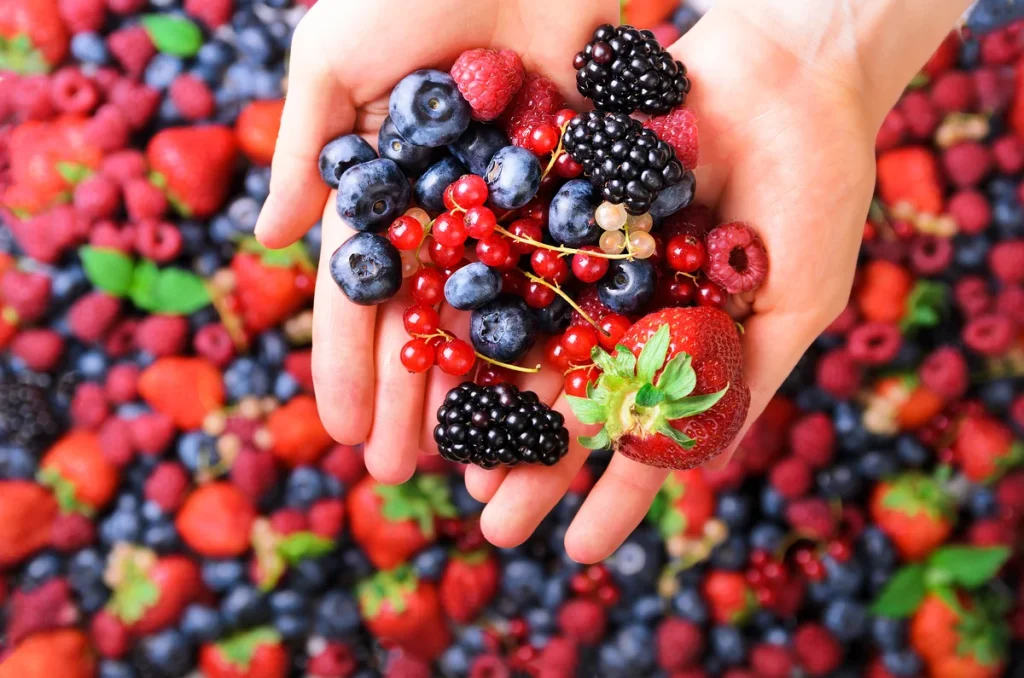
Microgreens
Microgreens, which have become popular in recent years, are among the fastest-cycle products in vertical farming. They can be harvested within 7–10 days from seeds such as broccoli, radish, buckwheat, mustard, and sunflower. These products are highly nutritious and are often preferred by restaurants.
Microgreens are grown in tray systems. Layered shelves allow for large-scale production in small spaces. With the right balance of light, temperature, and humidity, continuous production is possible throughout the year. Additionally, these plants can grow on materials such as coconut fiber or felt instead of soil.
Tip: A spray irrigation system should be used for watering. This ensures moisture is maintained without damaging the roots.
Common mistake: Excessive watering can lead to mold formation. Proper air circulation must be ensured.
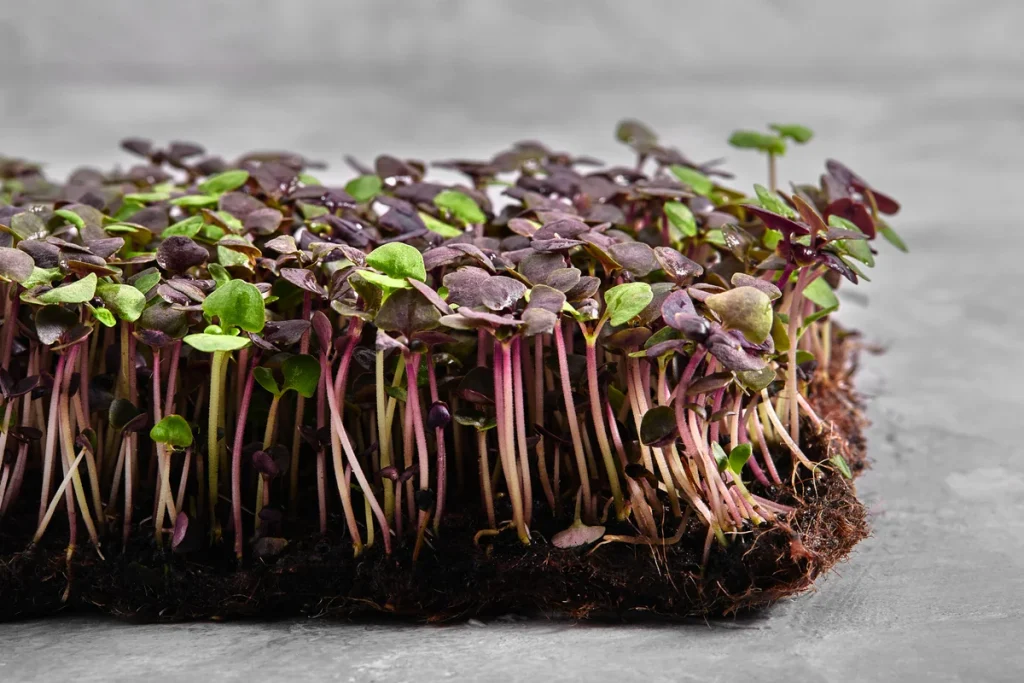
Root Vegetables
In vertical farming, root vegetables require more care than traditional methods. This is because sufficient space and oxygen must be provided for root development. However, when grown with the right system, crops such as carrots, beets, radishes, turnips, and red onions yield very successful results.
These plants are typically grown in aeroponic systems. The roots hang in the air and are sprayed with nutrients at regular intervals. This allows the roots to develop faster and more evenly. Water usage is also minimized. Short varieties of root vegetables are selected for vertical systems because space is limited for varieties that require deep roots.
Tip: Keeping the lighting period between 12–14 hours and supplementing with CO₂ supports growth. Furthermore, the potassium content in the nutrient solution improves root quality.
Common mistake: Using excessively concentrated nutrients in a soil-free environment causes root burn. Regular measurements should be taken.

Mushroom Types
In vertical farming systems, types such as oyster, shiitake, and white button mushrooms can be easily cultivated with special humidity and temperature control. Mushrooms do not require LED lighting because they do not photosynthesize. This saves energy and allows dark areas to be utilized.
In mushroom production, the humidity level should be 85–90%, and the temperature should be around 20–24°C. In vertical systems, bags or blocks are stacked on top of each other to use the production area most efficiently. The production cycle is usually 4–6 weeks. This allows for regular harvesting throughout the year. Furthermore, pesticides are not used in this system because it is an environment isolated from pests.
Tip: Keeping air circulation at a low speed ensures that humidity remains stable. It is also very important that the environment is sterile during the mycelium growth period.
Common mistake: A decrease in humidity inside the bag causes the mycelium to dry out. In this case, yield decreases.
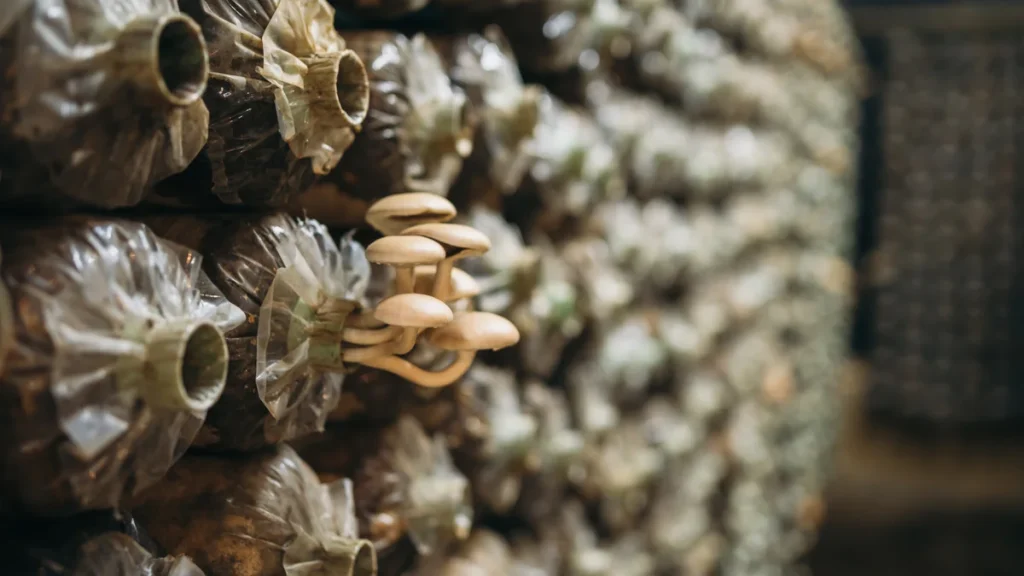
Tomatoes, Peppers, and Cucumbers
In vertical farming, fruit-bearing vegetables such as tomatoes, peppers, and cucumbers offer high yields with suitable systems. These plants have a climbing or trailing structure, making them suitable for vertical arrangements. Cherry tomatoes and mini pepper varieties are particularly prominent in these systems.
These types of plants are usually grown in hydroponic or drip irrigation-based systems. The plants are fed with mineral-balanced solutions. The temperature is 22–26°C, and the light period can be up to 16 hours. These plants are supported by bees or artificial pollinator systems when pollination support is needed.
Tip: Regular pruning of plants increases air circulation and boosts yield. Additionally, plants should be supported with stakes to keep them upright.
Common mistake: Imbalance in nutrients causes yellowing of leaves and flower drop.

Flowers and Ornamental Plants
Vertical farming is used not only for food production but also for aesthetic and decorative purposes. Ornamental plants such as orchids, violets, lavender, and petunias can be grown in vertical systems. These plants play an important role in increasing green spaces within cities.
Ornamental plants are usually grown in substrate or peat-based systems. Humidity, temperature, and light conditions are adjusted according to the type of plant. In particular, the color temperature of LED lights affects flower color and blooming time. These plants also have the advantage of improving indoor air quality.
Tip: Weekly nutrient supplementation and regular leaf cleaning extend the plant’s lifespan.
Common mistake: Overwatering can lead to fungal diseases on flower leaves.
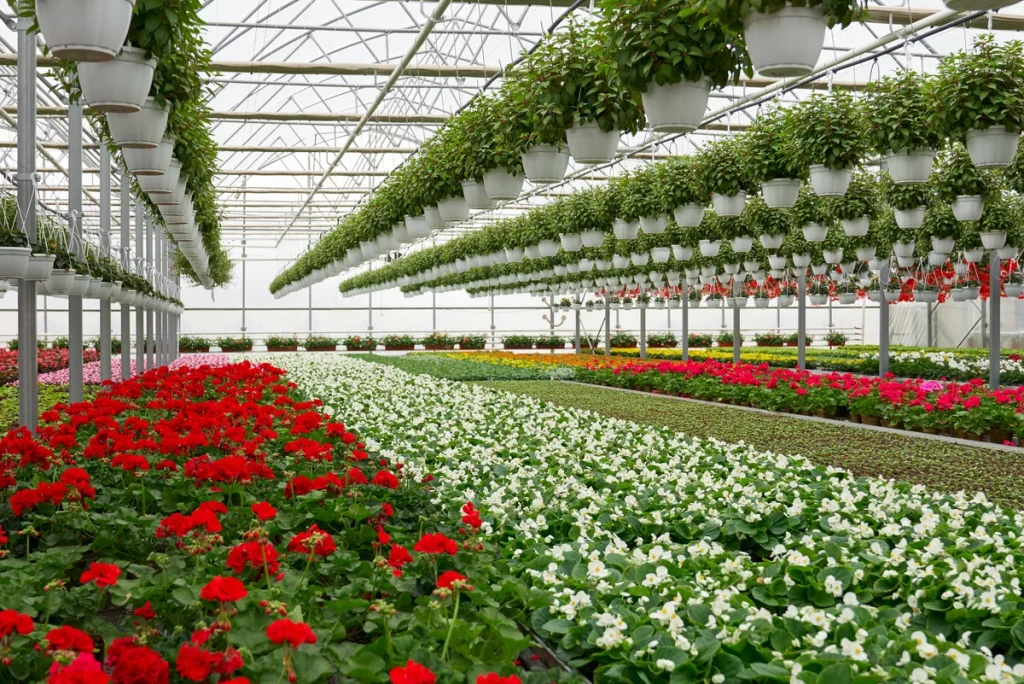
The Future of Grains and Legumes
Grains and legumes are not yet widely cultivated in vertical farming systems. This is because these plants have deep roots and a long growth period. However, research shows that crops such as wheat, lentils, chickpeas, and beans can be grown under controlled environmental conditions.
Growing these types of crops requires intense light, a large root volume, and a long nutrient cycle. Experiments conducted in modern laboratories have shown that hydroponic and aeroponic systems can be successful in grain production. In particular, the advantages of low water consumption and climate-independent production may make this group suitable for vertical farming in the future.
Tip: In the future, genetically short-stemmed varieties are expected to be preferred in these systems. This will allow for space savings.
Common mistake: Trying to grow grains in classic vegetable systems creates insufficient space for root development.
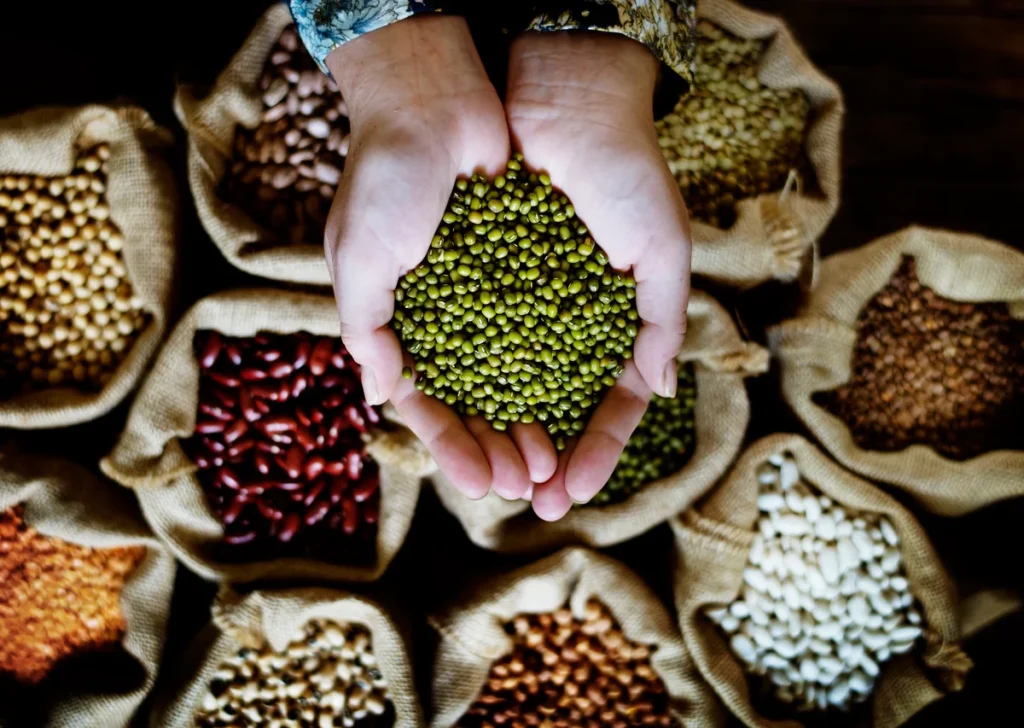
The Future of Vertical Farming and Sustainability
Vertical farming is seen as the key to food security in the cities of the future. Population growth, the climate crisis, and dwindling water resources have exposed the limitations of traditional farming. Vertical systems, however, offer innovative solutions to these problems. Reduced water usage, elimination of pesticide needs, and a lower carbon footprint are among the main advantages.
Furthermore, systems equipped with artificial intelligence and sensor technologies allow the light, water, and nutrient needs of each plant to be automatically monitored. This reduces production losses and increases yield. This technology will shape the future of sustainable agriculture.
Tip: Solar-powered systems reduce energy costs. Local production also reduces carbon emissions from logistics.
Common mistake: Neglecting energy optimization in system planning can reduce profitability in the long term.
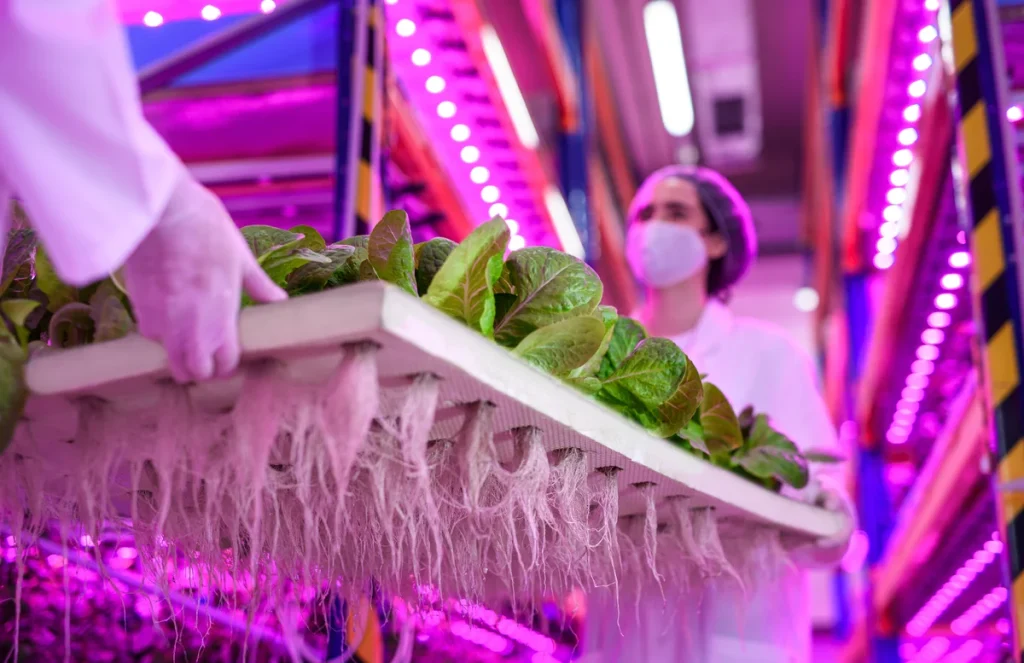
Frequently Asked Questions (FAQ)
Green leafy vegetables and microgreens are the fastest-growing types. They can be harvested within 7–14 days. These products provide high yields with low energy consumption.
Generally, no. Instead, hydroponic or aeroponic systems that use nutrients dissolved in water are preferred.
Approximately 90% less water is used compared to traditional farming. This is because water is recycled in the system and evaporation is minimal.
Yes, it is possible to grow lettuce, basil, and microgreens indoors using small-scale systems. LED lighting is sufficient.
Short-term outages do not affect the plants. However, in the event of long outages, an emergency power source is recommended as the light and water flow will stop.
The initial investment cost is high, but it becomes profitable in the long run due to energy and water savings. Additionally, year-round production is possible.
Because fruits take longer to ripen and have a large root area. Therefore, careful nutrient and light management is required.
Since production takes place in a closed environment, the risk of pests is very low. This eliminates the need for pesticides.
It reduces water and soil waste and lowers carbon emissions. It also minimizes food transportation since production can take place within cities.
It is expected to become widespread especially in large cities, on rooftops, in shopping centers, and even in skyscrapers.
Mini Summary
Vertical farming is the most effective way to achieve high yields in limited spaces. Leafy greens, aromatic herbs, microgreens, and some fruits are the most suitable products for this system. The system’s diversity increases with mushrooms and ornamental plants. In the future, this model will further develop with grain and legume production.
This innovative method has become one of the cornerstones of sustainable urban agriculture.
If you would like to learn more about vertical farming, receive system setup guides, or get implementation recommendations, please contact us.
👉 With proper planning, you too can set up your own vertical farming system.

 English
English
 Türkçe
Türkçe
 Ελληνικά
Ελληνικά
 Deutsch
Deutsch
 ქართული
ქართული
 العربية
العربية




